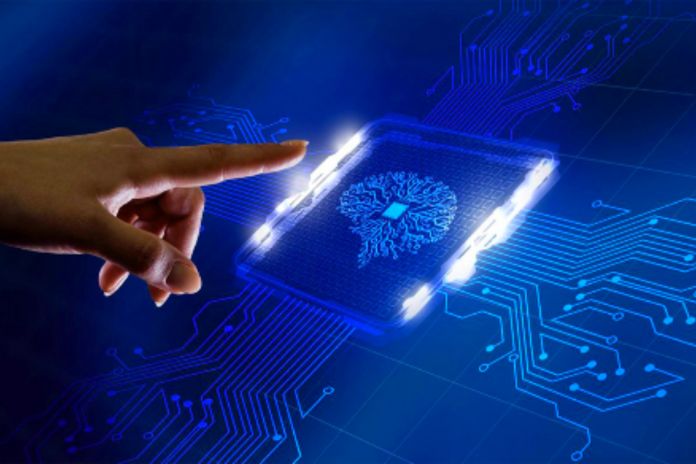Artificial Intelligence can be used strategically in a business-aligned way, focusing on optimizing human decisions and directly helping leaders with more delicate choices.
As we’ll see in the topic of applications, it can be deployed in many industries to help collect data in large amounts, with greater complexity, to generate valuable insights and ideas.
By the way, this is the basis of using AI for business intelligence, monitoring relevant indicators. One of the most common analytics is predictive analytics. It consists of navigating through a lot of historical information, learning some pattern or trend, and generating a solution that predicts something that might happen in the future.
Thus, AI becomes more strategic, generating value for companies directly and not just as an operational support. Thus, it becomes crucial to increase accuracy, reduce errors and reduce costs.
How Is Artificial Intelligence Used In Everyday Life?
Now, we will see how artificial intelligence is strongly present in everyday life.
Natural Language Processing
A large sub-area of AI today is natural language processing (NLP). NLP applications are performed with Machine Learning and Deep Learning algorithms. It makes a machine understand language and human communication through audio, voice processing, or text. In this way, systems can interact with humans.
NLP also involves an important branch called sentiment analysis. From a communication sample, intelligent software can understand patterns to understand the feeling shown with that specific speech or phrase.
With this large application, it is possible to create virtual assistant solutions that serve customers and help employees to function as artificial intelligence support in the IT team, for example. These assistants can understand desires and automate some tasks for humans, which helps boost productivity.
In customer service, collecting consumer data becomes feasible to create even more effective and segmented communication pieces according to the public’s preferences. In this sense, the system works on customer loyalty with efficient and agile support, as well as helping to understand the profile of these people.
Fraud Detection
Deviation detection algorithms (outliers) can be used to identify fraud and monitor improper behavior. In companies in the financial sector, for example, it is possible to monitor operations and notice whenever any strange, non-standard movement occurs.
Thus, if any fraudulent transaction is carried out, the system can identify it so that the IT team can make the appropriate decisions. This strategy is very common in digital banks today. For example, companies use this approach to protect their customers from intrusions and misuse of credit data.
Predictive Maintenance
Another important application is predictive maintenance. This use is even associated with the internet of things, which we have already mentioned. IoT sensors are used to monitor the machines and assets, while AI will be applied to understand the data and predict if there will be any malfunction or failure in them. As a result, the company can anticipate operational stoppages to make prior adjustments.
Thus, costs are saved as the company guarantees the stability of its operations and optimizes productivity. This also favors strategic planning and allows for controlled work with a clear vision of the future of finance.
Recommendation Systems
Another strategy in marketing and communicating with customers is the use of recommender systems. It is even possible to create them with unsupervised association algorithms. Based on a historical base of customer purchases, the system can predict what the consumer will buy, thus performing this indication.
This approach expands beyond commerce. It is also used in audio and video streams to indicate content clients can consume in sequence. Also, it works based on statistics: the AI selects the most likely suggestions and eliminates the least likely ones.
With this, the company increases the chances of keeping the customer buying frequently and consuming content on the platforms. This application is also important for building customer loyalty and generating value that will be outstanding in optimizing their experience.
Image Recognition
The AI can also recognize images to understand a photo and identify its components. The reasoning is somewhat similar to audio and text processing. However, the most common applications are neural networks and Deep Learning with layered learning. One of the applications is the reading of exams to grant predictive and intelligent diagnoses, for example. Thus, it is possible to fight diseases at an earlier stage.
Demand Forecast
Another common use is for forecasting customer demand. The systems are applied to understand the market and predict which products will be most in demand to prepare the company to manage inventory and supplier relationships. So, it becomes feasible to optimize profitability and always be ahead of consumers’ desires to supply them.
Writing Of Documents
AI has been used extensively to streamline document writing, a common task in organizations of all types. It ensures care with spelling, tone, grammar, and other issues. This application is heavily based on natural language processing, especially text.
From understanding what was written, the system can carry out analyses beyond mere comparisons with rules by understanding the semantic value of the phrases and terms used and making suggestions of what a human would do.
Spam Filter
Similarly, it is common for AI to be used to filter emails for spam. The systems can detect suspicious components in these messages to perform this categorization. A supervised learning model can be used, with classification algorithms, as well as an unsupervised model, with clustering ones.
Artificial intelligence systems are extremely important for the modern world. As we have seen, the area is strongly based on statistical models and divided into several learning types and algorithms. The applications are diverse and help generate stability and productivity, as well as the ability to predict the future and anticipate possible risks or opportunities.
Also Read: Artificial Intelligence In Companies And How To Apply

